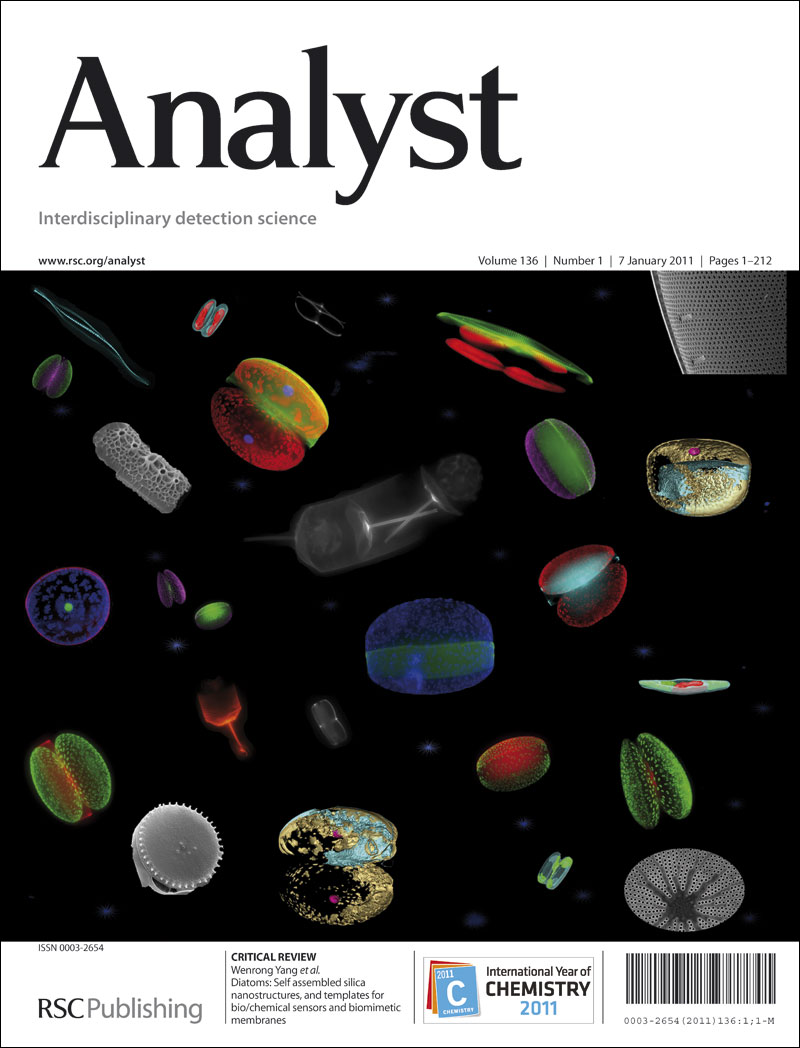A dual-mode colorimetric/photoelectrochemical sensing platform derived from the decomposition of CuHPT for glutathione detection
IF 3.6
3区 化学
Q2 CHEMISTRY, ANALYTICAL
引用次数: 0
Abstract
The development of integrated dual signal outputs for reliable and accurate determination of glutathione (GSH) is highly significant for its key role in the physiological processes. Herein, a colorimetric/photoelectrochemical (PEC) dual-mode sensing platform was constructed based on the GSH triggered decomposition of a copper-organic framework (CuHPT). A hollow nanostructured type-II heterojunction of CoS/In-CdS was synthesized using imidazolate framework (ZIF-67) as a template. CuHPT was decomposed in the presence of GSH to form catechol ligands and Cu+, enabling the dual-mode sensing. An ion exchange reaction between the produced Cu+ and Cd2+ of CoS/In-CdS resulted in the formation of Cu2S, causing the decrease of the photocurrent and the sensitive detection of GSH. Cu+ catalyzed H2O2 to produce ·OH via a Fenton-like reaction, achieving the colorimetric sensing. The proposed dual-mode sensor based on the target-triggered decomposition of CuHPT exhibited linear responses for colorimetric and PEC sensing of GSH in ranges of 0.05 - 1.20 mM and 0.5 - 800 μM, with the limit of detections (LODs) of 18 μM and 0.11 μM, respectively. The reliable determination of GSH in human serum provides a new possibility for application of the present dual-mode sensor in clinical assay.基于CuHPT分解的谷胱甘肽双模比色/光电化学传感平台
由于谷胱甘肽(GSH)在生理过程中起着关键作用,开发可靠、准确测定谷胱甘肽(GSH)的集成双信号输出具有重要意义。本文基于GSH触发的铜有机骨架(CuHPT)分解,构建了比色/光电化学(PEC)双模传感平台。以咪唑酸骨架(ZIF-67)为模板,合成了CoS/In-CdS的空心ii型纳米异质结。CuHPT在GSH存在下分解形成儿茶酚配体和Cu+,实现双模传感。CoS/ in - cds产生的Cu+和Cd2+发生离子交换反应,形成Cu2S,导致光电流降低,对GSH的检测灵敏度降低。Cu+通过类芬顿反应催化H2O2生成·OH,实现比色传感。基于CuHPT目标触发分解的双模传感器在0.05 ~ 1.20 mM和0.5 ~ 800 μM范围内对谷胱甘肽的比色和PEC传感具有线性响应,检测限(lod)分别为18 μM和0.11 μM。可靠地测定人血清中谷胱甘肽,为双模传感器在临床检测中的应用提供了新的可能性。
本文章由计算机程序翻译,如有差异,请以英文原文为准。
求助全文
约1分钟内获得全文
求助全文
来源期刊

Analyst
化学-分析化学
CiteScore
7.80
自引率
4.80%
发文量
636
审稿时长
1.9 months
期刊介绍:
"Analyst" journal is the home of premier fundamental discoveries, inventions and applications in the analytical and bioanalytical sciences.
 求助内容:
求助内容: 应助结果提醒方式:
应助结果提醒方式:


